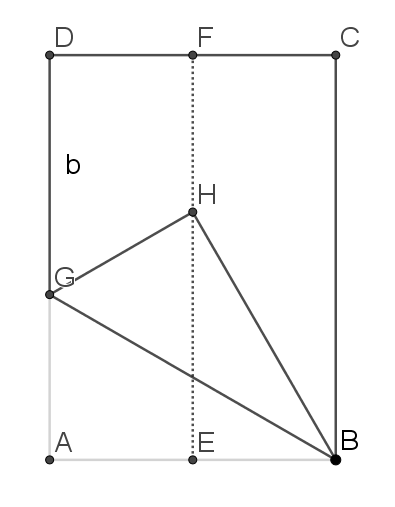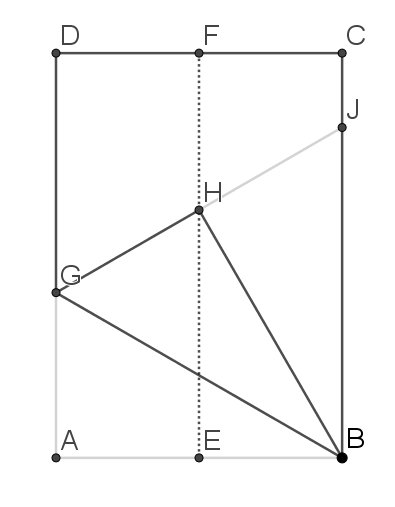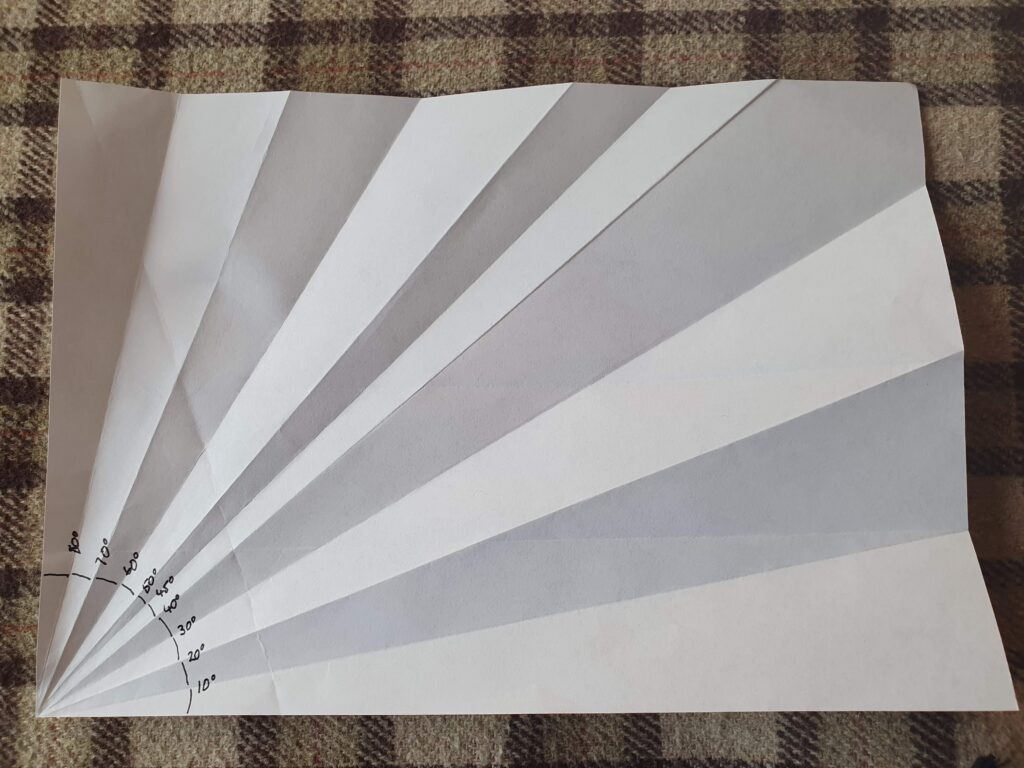A method to trisect angles using origami, and a paper protractor
Big MathsJam 2020 was somewhat different from usual, as with many things this year. Rather than meeting up in Staffordshire, we instead met in a virtual space and gave all our talks as a video conference. I decided to share a couple of my favourite paper folding tricks that I’d been meaning to write up for my blog for quite some time. More than a month later, here’s the writeup!
The first technique to share is folding 60° from a rectangular sheet of paper. This fold is fairly well known and is one of my favourite pieces of mathematical origami – it can be used to make an equilateral triangle which can then be the starting point for many other constructions.

Start with a rectangle of paper and fold it in half lengthways (forming the line EF shown in the diagram).
Then lift up corner A, hold your finger on corner B, and move A up to meet the folded line EF, so that point A becomes point H.
Claim: Angle GBC is 60°.
How do we know it’s a 60° angle? Well we can continue the line GH:

GAB and GHB are congruent triangles because when we fold they are literally the same triangle! JHB is also congruent; since H lies on the line of symmetry of the paper, GH and HJ are equal in length, and we know that angle GHB is a right angle because it is the corner of the paper, so JHB is also a right angle. HB is common to both triangles so they must be congruent. This means that angles ABG, GBH and HBJ are all equal, and since they sum to 90° they must each be 30°. So triangle GBJ is equilateral.
The next step to making a protractor from origami is to trisect our 60° angle. It is well known that arbitrary angles can’t be trisected using a straight edge and compasses, but it turns out origami allows us more freedom and so there is a trisection method using paper folding! I followed the instructions from this Plus article.
Trisecting 60° gives us 20°, and bisecting an angle is easy using origami, so we can get 10° and if we’re careful and use thin enough paper we can get 5° too. So the next time you need to measure an angle and you don’t have a protractor but you do have a sheet of paper, get folding!

